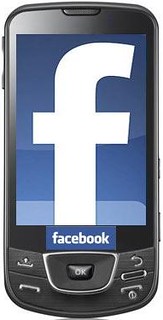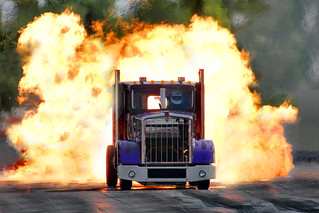
Update: Instagram Improved Their App's Performance. Here's How.
When you find your mobile application that ran fine in the US is slow in other countries, how do you fix it? That’s a problem Facebook talks about in a couple of enlightening videos from the
@scale conference. Since mobile is eating the world, this is the sort of thing you need to consider with your own apps.
In the US we may complain about our mobile networks, but that’s more #firstworldproblems talk than reality. Mobile networks in other countries can be much slower and cost a lot more. This is the conclusion from Chris Marra, Project Manager at Facebook, in a really interesting talk titled Developing Android Apps for Emerging Market.
Facebook found in the US there’s 70.6% 3G penetration with 280ms average latency. In India there’s 6.9% 3G penetration with 500ms latency. In Brazil there’s 38.6% 3G penetration with more than 850ms average latency.
Chris also talked about Facebook’s comprehensive research on who uses Facebook and what kind of phones they use. In summary they found not everyone is on a fast phone, not everyone has a large screen, and not everyone is on a fast network.
It turns out the typical phone used by Facebook users is from circa 2011, dual core, with less than 1GB of RAM. By designing for a high end phone Facebook found all their low end users, which is the typical user, had poor user experiences.
For the slow phone problem Facebook created a separate application that used lighter weight animations and other strategies to work on lower end phones. For the small screen problem Facebook designers made sure applications were functional at different screen sizes.
Facebook has moved to a product organization. A single vertical group is responsible for producing a particular product rather than having, for example, an Android team try to create all Android products. There’s also a horizontally focussed Android team trying to figure out best practices for Android, delving deep into the details of what makes a platform tick.
Each team is responsible for the end-to-end performance and reliability for their product. There are also core teams looking at and analyzing general performance problems and helping where needed to improve performance.
Both core teams and product teams are needed. The core team is really good at instrumentation and identifying problems and working with product teams to fix them. For mobile it’s important that each team owns their full product end-to-end. Owning core engagement metrics, core reliability, and core performance metrics including daily usage, cold start times, and reliability, while also knowing how to fix problems.
To solve the slow network problem there’s a whole other talk. This time the talk is given by Andrew Rogers, Engineering Manager at Facebook, and it’s titled Tuning Facebook for Constrained Networks. Andrew talks about three methods to help deal with network problems: Image Download Sizes, Network Quality Detection, Prefetching Content.
Overall, please note the immense effort that is required to operate at Facebook scale. Not only do you have different phones like Android and iOS, you have different segments within each type of phone you must code and design for. This is crazy hard to do.
Reducing Image Sizes - WebP saved over 30% JPEG, 80% over PNG
Click to read more ...
 Wednesday, November 26, 2014 at 8:56AM
Wednesday, November 26, 2014 at 8:56AM 























